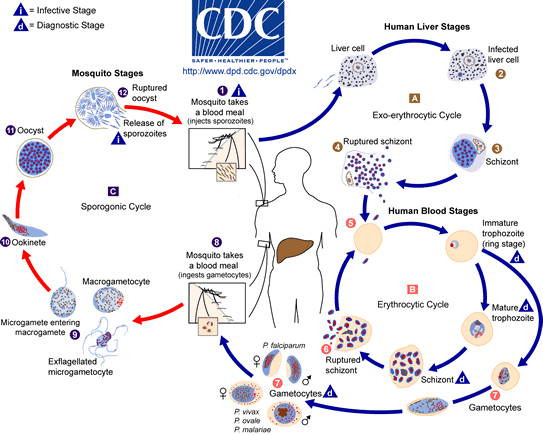QUESTION
What is the mode of transmission of Malaria?
ANSWER
Malaria is transmitted normally via the bite of an infected mosquito. These mosquitoes, always female and of the genus Anopheles, carry malaria parasites in their salivary glands. The parasites, at this part of their life cycle known as sporozoites, are introduced into the host’s blood when the mosquito takes a blood meal. From there, the sporozoites travel to the liver, reproduce (this process may take several weeks), then finally re-enter the blood stream. At this point, the patient will begin to experience symptoms. Eventually, the malaria parasites change again, into gametocytes, which are picked up by another mosquito, again when it bites the infected person. In this way, the life cycle of the malaria parasite continues.
Because malaria reproduces in the blood and in the liver, in some cases malaria can be transferred via organ transplant or blood transfusion. In addition, malaria parasites can cross the placenta, and so can be transmitted from a mother to her unborn child, either in the womb or during childbirth. This is known as congenital malaria.
